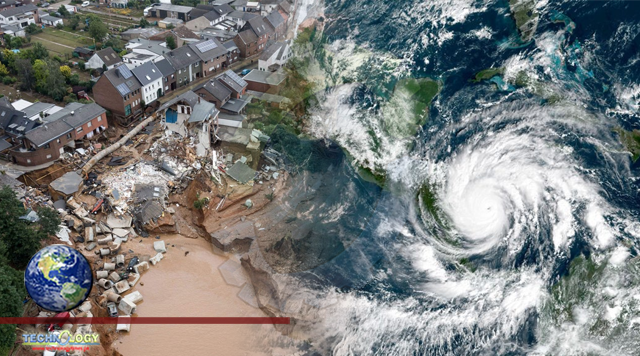New research predicts that slow-moving Intense storms with the potential for heavy rainfall, just like those that brought deadly flooding to parts of Europe in recent days, will become more common there by the end of the century.

By Jan Wesner Childs
The work conducted by scientists from England’s Newcastle University and the United Kingdom’s Met Office estimated that these types of storms could happen 14 times more often over land, because of climate change.
It’s already well documented that precipitation, including rainfall from storms, has risen in many areas as temperatures have gotten warmer over the past 120 years. That trend is expected to continue.
The new work, recently published in the journal Geophysical Research Letters, showed that storms that can produce intense rain may move slower with climate change.
That means they could sit longer in one place, dumping more rainfall to fuel these kinds of extreme flooding events.
“This study shows that in addition to the intensification of rainfall with global warming, we can also expect a big increase in slow-moving storms which have the potential for high rainfall accumulations,” Lizzie Kendon, a science fellow at the Met Office and a study author, said in a news release.
“This is very relevant to the recent flooding seen in Germany and Belgium, which highlights the devastating impacts of slow-moving storms.”
The storms last week in Europe sat over the central part of the continent for days. Up to 7 inches of rain fell in some areas, bringing flooding that destroyed homes, inundated neighborhoods and left more than 160 people dead.
Such near-stationary storms aren’t currently common in the region. The researchers said their study is one of the first to look at changes in the speed of such systems.
Climate change driven by warmer temperatures impacts extreme weather in different ways around the world. While precipitation and flooding are increasing in some areas, others are seeing historic drought conditions.
That’s because factors that influence precipitation – things like evaporation, wind patterns, ocean currents and local climates – vary from location to location and are affected differently by the warmer atmosphere.
The scientists that did the study on storms in Europe hope their work sends a signal on the need to curb greenhouse gases and address climate change impacts.
“This, alongside the current floods in Europe, is the wake-up call we need to produce improved emergency warning and management systems, as well as implementing climate change safety factors into our infrastructure designs to make them more robust to these severe weather events,” Hayley Fowler, another study author and an engineering professor at Newcastle, said.
The Weather Company’s primary journalistic mission is to report on breaking weather news, the environment and the importance of science to our lives. This story does not necessarily represent the position of our parent company, IBM.
Originally published at The weather channel